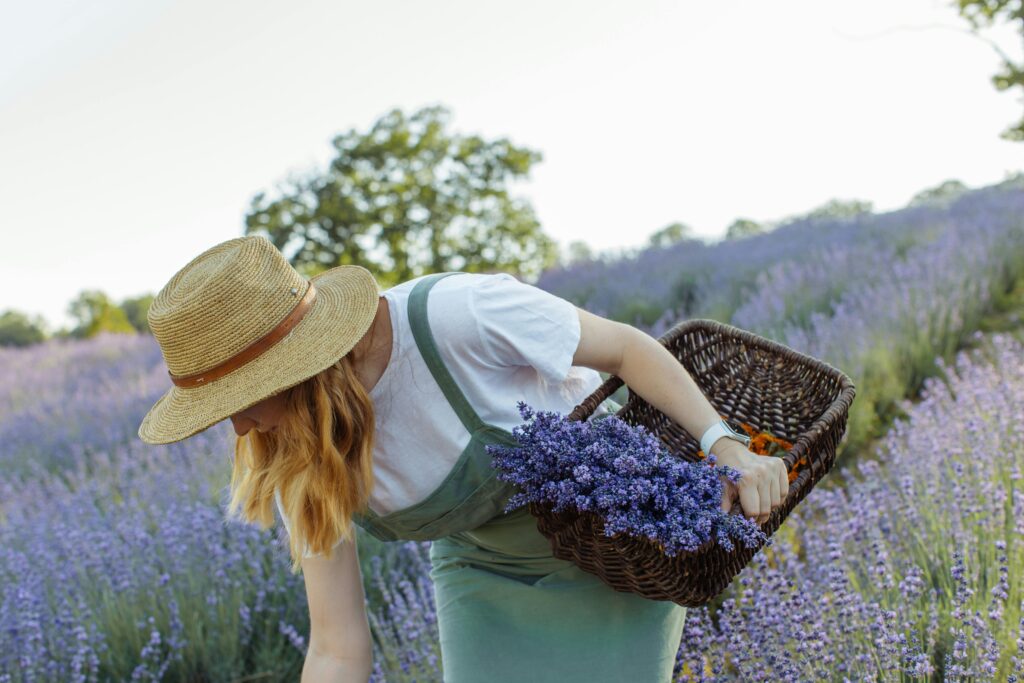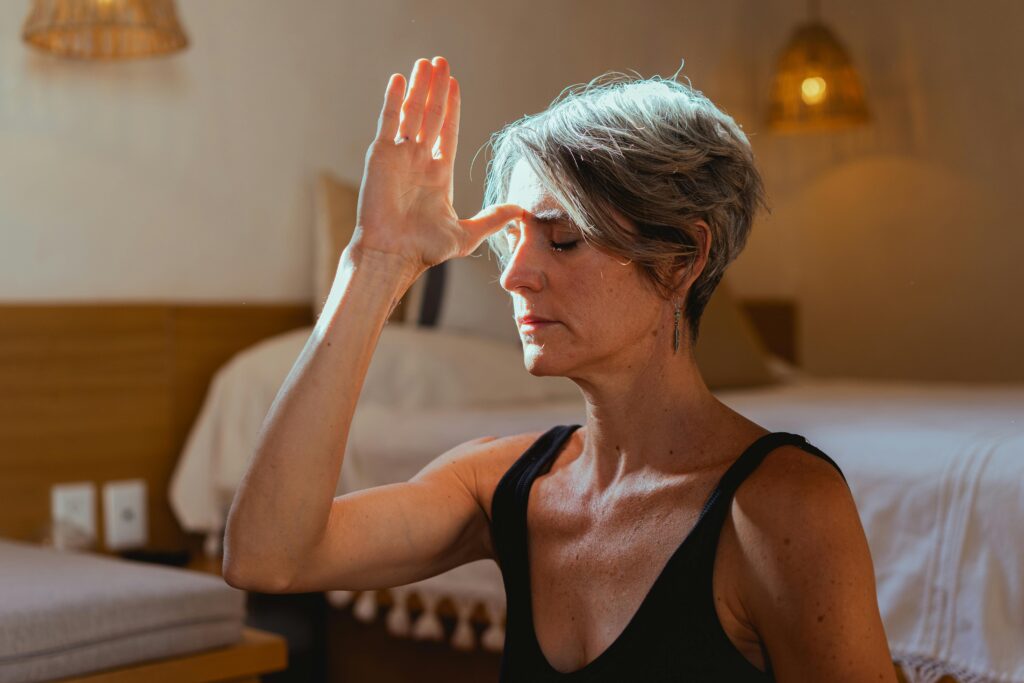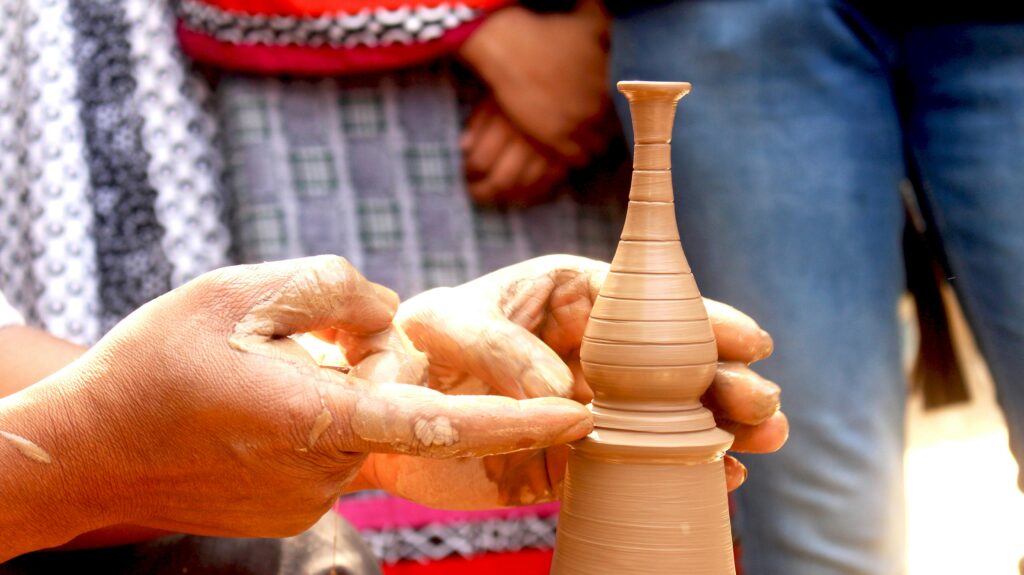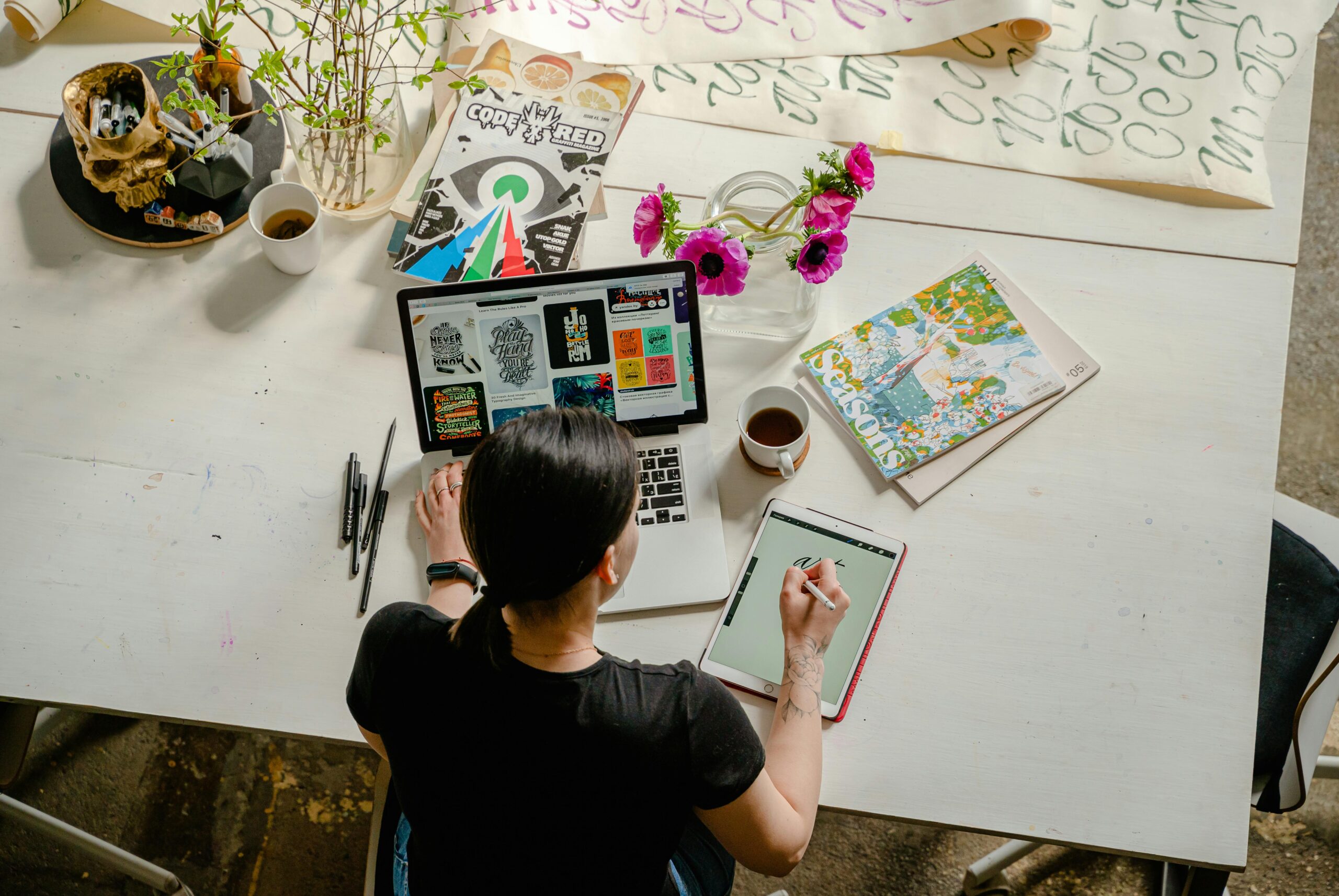Reaching your 40s is a powerful moment of transformation. For many women, this decade brings a deeper sense of self-awareness, hard-won confidence, and perhaps most importantly the freedom to finally prioritize yourself. Whether your children are becoming more independent, your career has found its rhythm, or you’re simply ready to reclaim time that’s truly yours, this is the perfect season to explore new passions.
Hobbies aren’t just pleasant ways to pass the time; they’re essential investments in your well-being. They reduce stress, spark creativity, build confidence, and connect you with like-minded souls. The right hobby can reignite parts of yourself you’d forgotten existed or introduce you to entirely new dimensions of who you’re becoming.
If you’ve been wondering what might light you up, here are eleven fulfilling hobbies that women over 40 are embracing with enthusiasm and joy.
1. Gardening

There’s something deeply grounding about working with soil and watching life emerge from seeds you’ve planted. Gardening offers physical activity, fresh air, and the incomparable satisfaction of growing your own flowers, herbs, or vegetables. It’s meditative, forgiving of mistakes, and rewarding in ways both tangible and spiritual.
Beyond the obvious benefits of homegrown produce and beautiful blooms, gardening teaches patience and acceptance of natural rhythms. You learn to work with the seasons rather than against them, to celebrate small victories like the first tomato of summer, and to bounce back from setbacks like an unexpected frost or hungry pests. The physical activity involved digging, weeding, planting is excellent low-impact exercise that improves flexibility and strength without feeling like a workout.
Many women find that gardening becomes a form of therapy, offering a quiet space to think or simply be present in the moment. You can start small with a windowsill herb garden or a few containers on a balcony, then expand as your confidence grows. Joining a community garden can add a social dimension, connecting you with fellow gardeners who share tips, seeds, and encouragement.
2. Writing
Whether you keep a private journal, start a blog, or work on that novel that’s been whispering to you for years, writing is a powerful tool for self-expression and reflection. It helps you process experiences, preserve memories, and discover what you truly think about the world. You don’t need to be “a writer” to write—you just need to be willing to put words on a page.
Writing offers remarkable flexibility you can do it anywhere, anytime, with minimal equipment. Morning pages, a practice of writing three stream-of-consciousness pages each morning, can clear mental clutter and spark creativity. Journaling about your day, your dreams, or your challenges creates a record of your inner life and often reveals patterns and insights you might otherwise miss.
If you’re drawn to sharing your voice more publicly, blogging about your passions, experiences, or expertise can build connections with readers around the world. Memoir writing lets you capture family stories before they’re lost, creating a legacy for future generations. Creative writing whether poetry, short stories, or longer fiction offers an escape into imagination and the thrill of creating entire worlds. The act of writing regularly sharpens your thinking, expands your vocabulary, and gives you a productive outlet for the full range of human emotions.
3. Yoga or Pilates

These practices meet you exactly where you are while gently challenging you to grow stronger and more flexible both physically and mentally. Yoga and Pilates improve posture, reduce stress, build core strength, and create a mindful connection between body and breath. The beauty is that they’re infinitely adaptable to your fitness level and can be practiced at home or in supportive community classes.
Yoga, with its various styles ranging from gentle restorative practices to more vigorous vinyasa flows, offers something for every body and temperament. It addresses not just physical fitness but also mental clarity and emotional balance through breathwork and meditation. Many women find that yoga helps with menopause symptoms, sleep quality, and anxiety management. The philosophy behind yoga also encourages self-compassion and non-judgment revolutionary concepts for women who’ve spent decades being critical of their bodies.
Pilates focuses specifically on core strength, alignment, and controlled movement. It’s particularly beneficial for improving posture (especially if you spend hours at a desk), preventing back pain, and building the kind of functional strength that makes daily activities easier. The emphasis on precision and control makes Pilates feel like a moving meditation, requiring focus that quiets mental chatter.
Both practices have welcoming communities and abundant online resources, making it easy to start at home and progress at your own pace.
4. Photography
In an age where we all carry cameras in our pockets, intentional photography invites you to truly see the world around you. Whether you’re capturing landscapes, family moments, or abstract details, photography trains your eye to notice beauty in unexpected places. You can start with your smartphone and gradually explore more advanced equipment as your passion grows.
Photography is about much more than technical skill it’s about developing your unique perspective and learning to see light, composition, shadow, and color in new ways. A morning walk becomes an adventure when you’re looking for interesting subjects. Family gatherings gain new dimension when you’re consciously documenting the small moments between the big ones. Travel becomes richer when you’re actively seeking the story behind each place.
As you progress, you might explore different genres portrait photography lets you capture personality and emotion, macro photography reveals intricate details in flowers and insects, street photography documents the human experience, and landscape photography connects you deeply with nature. The editing process adds another creative layer, letting you enhance your images and develop a signature style.
Photography also creates natural opportunities for connection. You can join photo walks, enter contests, share your work on social media, or even sell prints. The skills you develop patience, observation, timing, and artistic vision enrich how you experience everyday life.
5. Learning a Language
Challenging your brain with a new language keeps your mind sharp while opening doors to different cultures and travel experiences. Language learning apps make it easier than ever to practice daily, and online conversation groups let you connect with speakers around the world. Choose a language that calls to you perhaps one connected to your heritage or a place you dream of visiting.
Research shows that learning a language in midlife and beyond has significant cognitive benefits, including improved memory, enhanced multitasking abilities, and even delayed onset of dementia. But beyond the brain health advantages, language learning is simply exciting. Each new word is a small victory, each conversation a breakthrough, each cultural insight a window into a different way of thinking.
Modern technology has revolutionized language learning. Apps like Duolingo, Babbel, or Rosetta Stone let you practice in short bursts throughout your day. YouTube offers countless free lessons. Online tutoring platforms connect you with native speakers for affordable one-on-one practice. You can watch foreign films with subtitles, listen to podcasts, or read children’s books in your target language.
The journey of language learning teaches humility and perseverance you will make mistakes, mispronounce words, and occasionally feel foolish. But pushing through that discomfort builds confidence that extends far beyond language skills. And imagine the joy of ordering dinner in fluent Italian on your Roman holiday, or reconnecting with your grandmother’s language, or making friends with someone who doesn’t speak your native tongue.
6. Pottery or Ceramics

Working with clay is tactile, creative, and surprisingly therapeutic. The process of centering clay on a wheel requires focus that quiets anxious thoughts, and hand-building techniques let you create functional art for your home. Many communities offer pottery classes where you can learn the basics and access equipment without the commitment of setting up a home studio.
There’s something primal and satisfying about shaping earth with your hands. Pottery engages all your senses the cool, wet feeling of clay, the hum of the pottery wheel, the earthy smell, the visual transformation from formless lump to finished vessel. The practice demands presence; you simply cannot throw a pot while worrying about tomorrow’s meeting or yesterday’s argument. This enforced mindfulness is part of why pottery is so therapeutic.
For beginners, hand-building techniques like pinch pots, coil building, and slab construction offer accessible entry points. You can create functional pieces like mugs, bowls, and planters, or purely decorative sculptures. As you advance, wheel throwing opens up new possibilities, though it requires patience centering clay on a spinning wheel is a skill that takes practice but becomes deeply meditative once mastered.
The full pottery process—wedging clay, forming, drying, trimming, glazing, and firing connects you to an ancient craft tradition while producing beautiful, useful objects. Each piece you create is unique, bearing the marks of your hands and creative choices. Many women find that the imperfections in handmade pottery become part of their charm, a reminder that beauty doesn’t require perfection.
7. Hiking and Nature Walking
Immersing yourself in nature is one of the most accessible and rejuvenating hobbies you can embrace. Hiking improves cardiovascular health, strengthens muscles, and provides the mental health benefits that come from fresh air and natural beauty. You can start with gentle trails and gradually build up to more challenging terrain, or simply enjoy leisurely nature walks in local parks.
The Japanese practice of “forest bathing” (shinrin-yoku) has demonstrated that time in nature lowers stress hormones, reduces blood pressure, and boosts immune function. You don’t need to climb mountains to reap these benefits a regular walk through wooded paths or along a riverside trail can be transformative. The rhythm of walking itself becomes meditative, and the ever-changing natural world ensures you never take the same walk twice.
Hiking can be as social or solitary as you prefer. Some women love the camaraderie of group hikes, joining clubs that organize regular outings and create supportive communities of outdoor enthusiasts. Others cherish solo hikes as precious time for reflection and solitude. You might enjoy bringing a field guide and learning to identify birds, wildflowers, or trees, adding a naturalist dimension to your walks.
The equipment requirements are minimal comfortable shoes, water, and weather-appropriate clothing get you started. As you develop the habit, you might invest in trekking poles, a good backpack, or hiking boots for more rugged terrain. Many women discover that hiking becomes a gateway to other outdoor activities like birdwatching, nature photography, or even backpacking.
8. Book Clubs and Reading Groups
Reading becomes even richer when shared with others. Book clubs provide intellectual stimulation, social connection, and exposure to books you might not have chosen on your own. Whether you join an existing group or start one with friends, the discussions and friendships that emerge from shared stories can become highlights of your month.
A good book club is about far more than the books themselves it’s about the conversations they spark, the perspectives they reveal, and the relationships they nurture. Discussing a novel’s themes, characters, and craft with other thoughtful readers deepens your understanding and helps you see dimensions you might have missed. These discussions often branch into personal experiences, current events, and life philosophies, creating meaningful connections.
Book clubs come in many flavors. Some focus on literary fiction, others on mysteries, memoirs, or non-fiction. Some meet in person over wine and snacks, others connect virtually across time zones. Some are structured with prepared questions, others flow organically. You might join a public library book club, an independent bookstore group, an online community, or start your own with friends who share your reading tastes.
Beyond the social benefits, committing to a book club ensures you make time for reading an activity that often gets crowded out by busy schedules. It challenges you to finish books, think critically about what you read, and articulate your responses. Many women find that their book club friends become some of their closest confidants, bonded by hundreds of shared stories and the vulnerability of authentic conversation.
9. Painting or Drawing
You don’t need innate talent to enjoy creating visual art you just need curiosity and a willingness to experiment. Painting and drawing are wonderful ways to express emotions, relax, and see progress in your skills over time. Watercolors, acrylics, colored pencils try different mediums until you find what feels right. The process matters far more than the product.
Many women come to art in their 40s and beyond without formal training, and that freedom from early instruction can actually be an advantage. You’re not trying to meet someone else’s standards or duplicate traditional techniques you’re exploring what speaks to you. Abstract art, in particular, offers pure expression without worrying about realistic representation. Watercolors are forgiving and portable. Acrylics dry quickly and layer beautifully. Colored pencils offer detailed control. Each medium has unique properties to discover.
The act of creating art is meditative and absorbing. When you’re mixing colors or focusing on a brushstroke, everyday worries fade into the background. Art-making activates different parts of your brain than verbal thinking, offering a form of problem-solving that’s intuitive and non-linear. Many women describe entering a “flow state” while painting, where time disappears and they’re completely present in the creative process.
You can take classes at community centers or art studios, follow along with YouTube tutorials, or simply experiment on your own. Join paint-and-sip events for social creativity, or set up a quiet corner at home as your art space. The beauty of art as a hobby is that it’s entirely yours you can paint whatever moves you, in whatever style calls to you, without anyone’s judgment or approval.
10. Volunteering
Finding a cause you care about and contributing your time creates profound meaning and connection. Whether you’re mentoring young women, serving at a food bank, fostering animals, or supporting a local arts organization, volunteering lets you use your skills and life experience to make a tangible difference. The relationships and sense of purpose it provides are deeply fulfilling.
By your 40s, you’ve accumulated valuable skills, wisdom, and perspective that can benefit others tremendously. Volunteering channels these assets toward causes that matter to you, creating a sense of contribution and legacy. It’s also remarkably good for your own wellbeing research consistently shows that volunteers experience greater life satisfaction, lower rates of depression, and even better physical health than non-volunteers.
The key is finding volunteer work that genuinely resonates with you. If you love animals, volunteer at a shelter or become a wildlife rehabilitator. If education matters to you, tutor children or adults learning to read. If you care about the environment, join conservation efforts or community cleanups. If you have professional skills in accounting, marketing, or management, nonprofits desperately need your expertise on their boards or special projects.
Volunteering also connects you with like-minded people who share your values, often forming friendships rooted in meaningful shared work. The structure of regular volunteer commitments adds purpose to your schedule, and the gratitude you receive whether from people you’ve helped or animals you’ve cared for nourishes your soul. Many women find that volunteering provides perspective on their own challenges and renews their sense of what’s truly important.
11. Dance

From ballroom to salsa, from line dancing to contemporary, dance is joyful movement that strengthens your body while freeing your spirit. It improves balance and coordination, boosts cardiovascular health, and is simply fun. Many dance studios offer beginner classes specifically for adults, creating welcoming environments where you can learn without pressure or judgment.
Dance addresses so many dimensions of wellbeing at once. Physically, it’s excellent exercise that doesn’t feel like work you’re so caught up in the music and movement that you forget you’re working out. It improves posture, flexibility, balance, and cardiovascular fitness. The coordination required to learn new steps challenges your brain, creating new neural pathways and improving cognitive function.
But the magic of dance goes beyond physical benefits. There’s pure joy in moving your body to music, in expressing emotion through gesture and rhythm. Dance reconnects you with your body in positive ways, celebrating what it can do rather than criticizing how it looks. Partner dancing adds social connection and the pleasure of moving in harmony with another person. Group dances create community and the satisfaction of moving as one unit.
Different dance styles offer different experiences. Ballet and contemporary dance emphasize grace and artistic expression. Latin dances like salsa and bachata are energetic and social. Ballroom dancing is elegant and structured. Line dancing is accessible and social without requiring a partner. Belly dancing celebrates feminine movement and can be empowering. Tap dancing is rhythmic and playful.
Most communities offer beginner adult dance classes in multiple styles. The atmosphere is usually supportive and fun, with students of all ages and abilities learning together. Many women discover that dance becomes a highlight of their week—a time when they feel fully alive, creative, and free.
Your 40s and beyond are not a time to settle into routine or narrow your world they’re an invitation to expand it. The hobbies you choose now can bring fresh energy to your days, introduce you to wonderful new friends, and remind you that growth and discovery don’t have age limits.
The key is to approach these possibilities with curiosity rather than pressure. You don’t need to be perfect or productive at your hobbies; you just need to show up and give yourself permission to explore. Try something that intrigues you, and if it doesn’t resonate, try something else. This is your time to experiment, to play, and to invest in activities that nourish your soul.
Each of these hobbies offers unique rewards, but they all share common gifts: the chance to learn something new, to challenge yourself gently, to connect with others, and to experience the deep satisfaction of engaging fully with an activity you love. Some hobbies will calm your mind, others will energize your body, and still others will feed your creative spirit. The right hobby for you is the one that makes you lose track of time, that you look forward to, that leaves you feeling more like yourself.
Whatever you choose, remember: it’s never too late to develop a new passion. The best time to start something fulfilling is always now. Your future self will thank you for taking this step toward a richer, more vibrant life.
